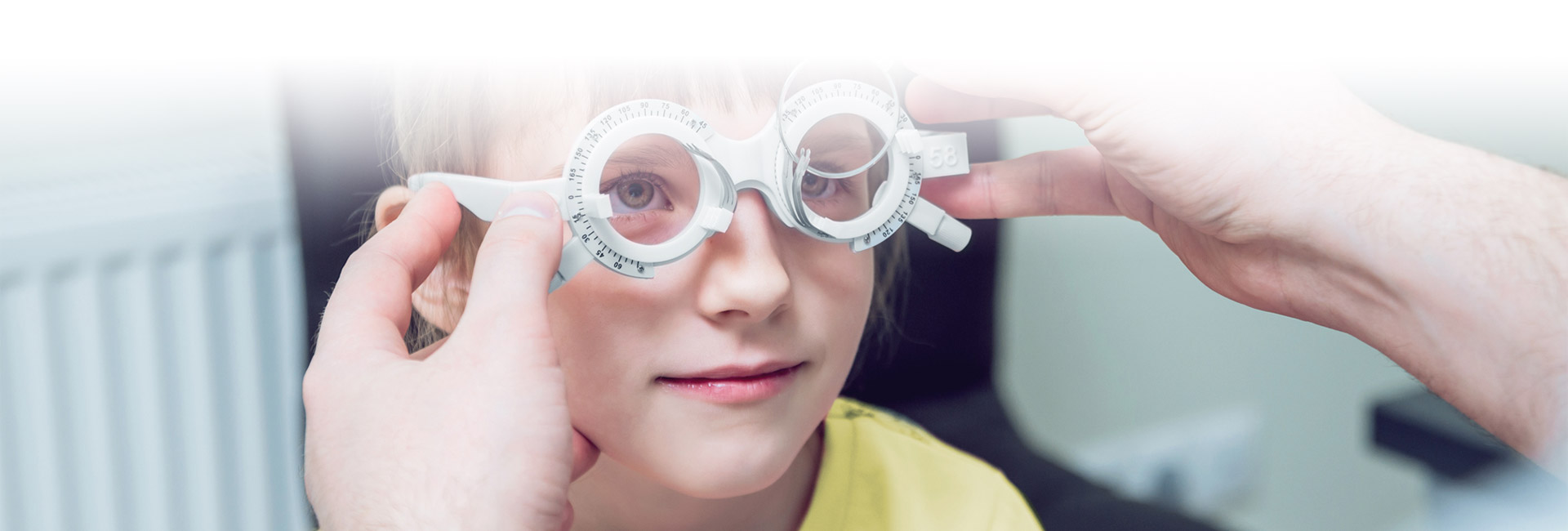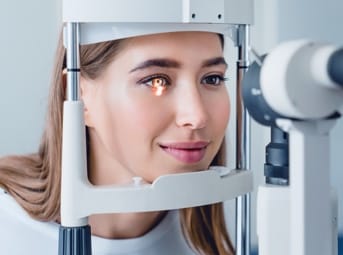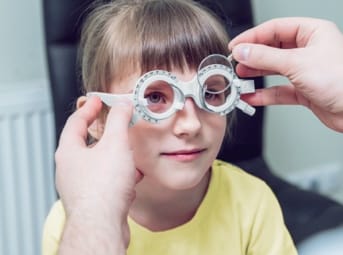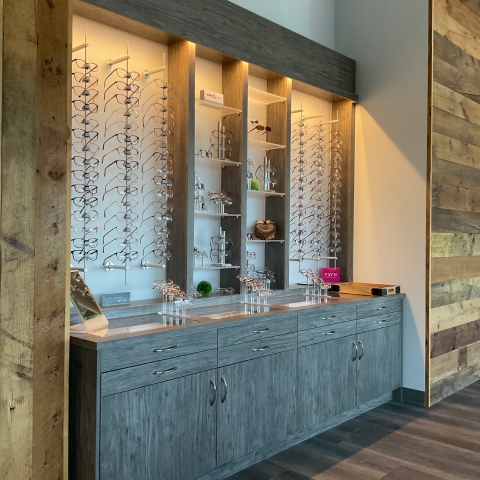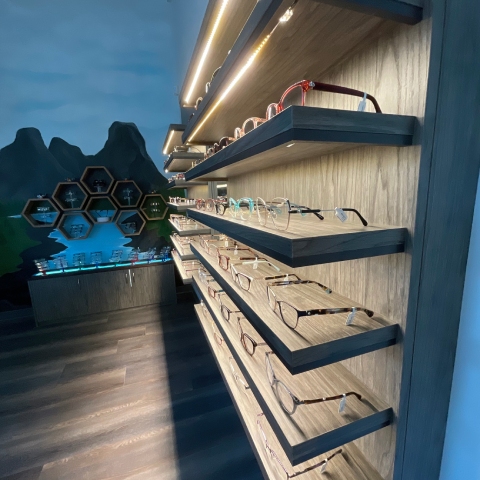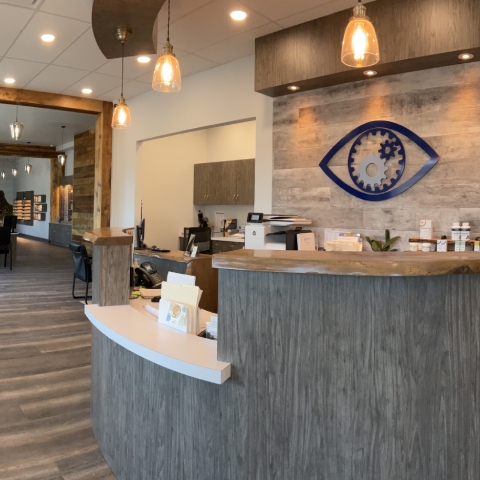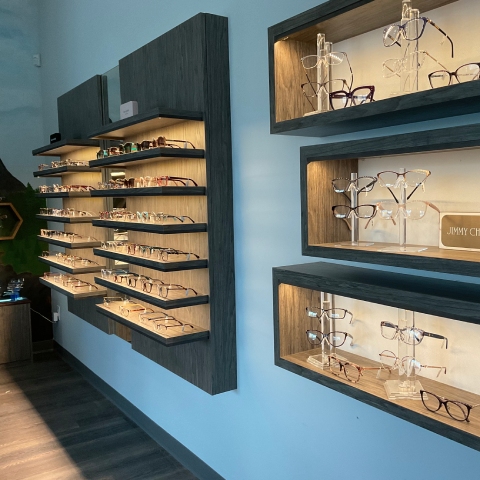Set for Visual Success
During childhood, we used our sight to learn all kinds of new things. Our vision has played a role in all aspects of our lives, starting with recognizing faces, using cutlery to feed ourselves, and learning to read and write.
Children’s vision is constantly changing until they’re in their 20s, so it’s important to have their eyes checked regularly for refractive errors (blurry vision) and ensure they’re developing properly. And the best way to do this is with regular eye exams.
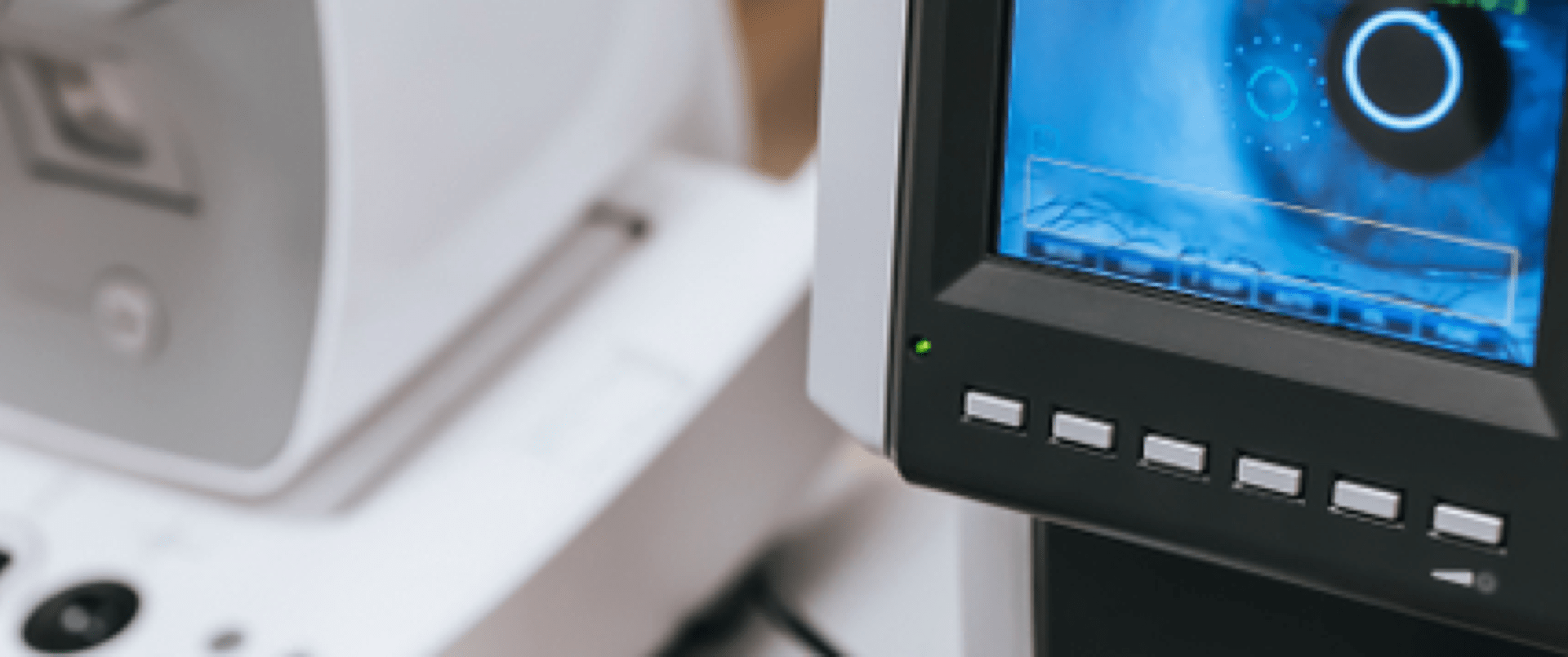
When Does My Child Need an Exam?
How often your child needs an eye exam depends on their age. Our friendly optometrists will be happy to see your child for their regularly scheduled eye exam, and you’re always welcome to ask us about any vision errors you feel your child may have.
0–6 Months
Infants and toddlers should first have their eyes examined between 6–9 months of age. Your optometrist will check their eyes to see if they are developing properly and look for signs of refractive errors like myopia (nearsightedness).
2–5 Years
It is important to have your child’s eyes checked again before they begin school. We want to make sure your child is set up for academic success because learning is largely visual. This will allow us to set them up with any prescription glasses or vision therapy to help them with school.
6–19 Years
We recommend that children in school should have annual eye exams to make sure their vision is being corrected and they have the visual development they need to succeed in their studies and recreational activities.

Common Vision Errors
Your family history and environment can impact on your child’s visual health. Some vision errors are more common than others, but we will do a complete health check at every eye exam.
Myopia
Also known as nearsightedness, myopia makes far-away objects difficult to see. Myopia affects nearly 30% of the Canadian population. It can make it difficult for children to see the whiteboard in class and affect their ability to play sports.
Myopia progression can be controlled but not cured.
Strabismus
Strabismus is when the eyes don’t line up, and the straighter of the 2 becomes dominant. The eyes may look like they are not pointed in the same direction. This occurs when there is improper teamwork between the eyes and the brain.
Amblyopia
Also known as lazy eye, amblyopia is described as poor vision in one eye. If amblyopia is diagnosed early, it can be treated with vision therapy, eyeglasses, or contact lenses. 2–4% of children under 6 have amblyopia.
Astigmatism
Astigmatism is a common condition that causes blurred and distorted vision. The surface of our eyes and the lens inside are typically round but are more oval or cylindrical in eyes with astigmatism, causing light to focus improperly on the retina. It can be corrected with glasses or contact lenses.
Start Sight Off Right
Make sure your child’s eyes are developing properly with regular eye exams. Eye exams are a non-invasive way to check in on your child’s eye health, ensure they can see properly, and begin treating any eye health issues as soon as they arise.
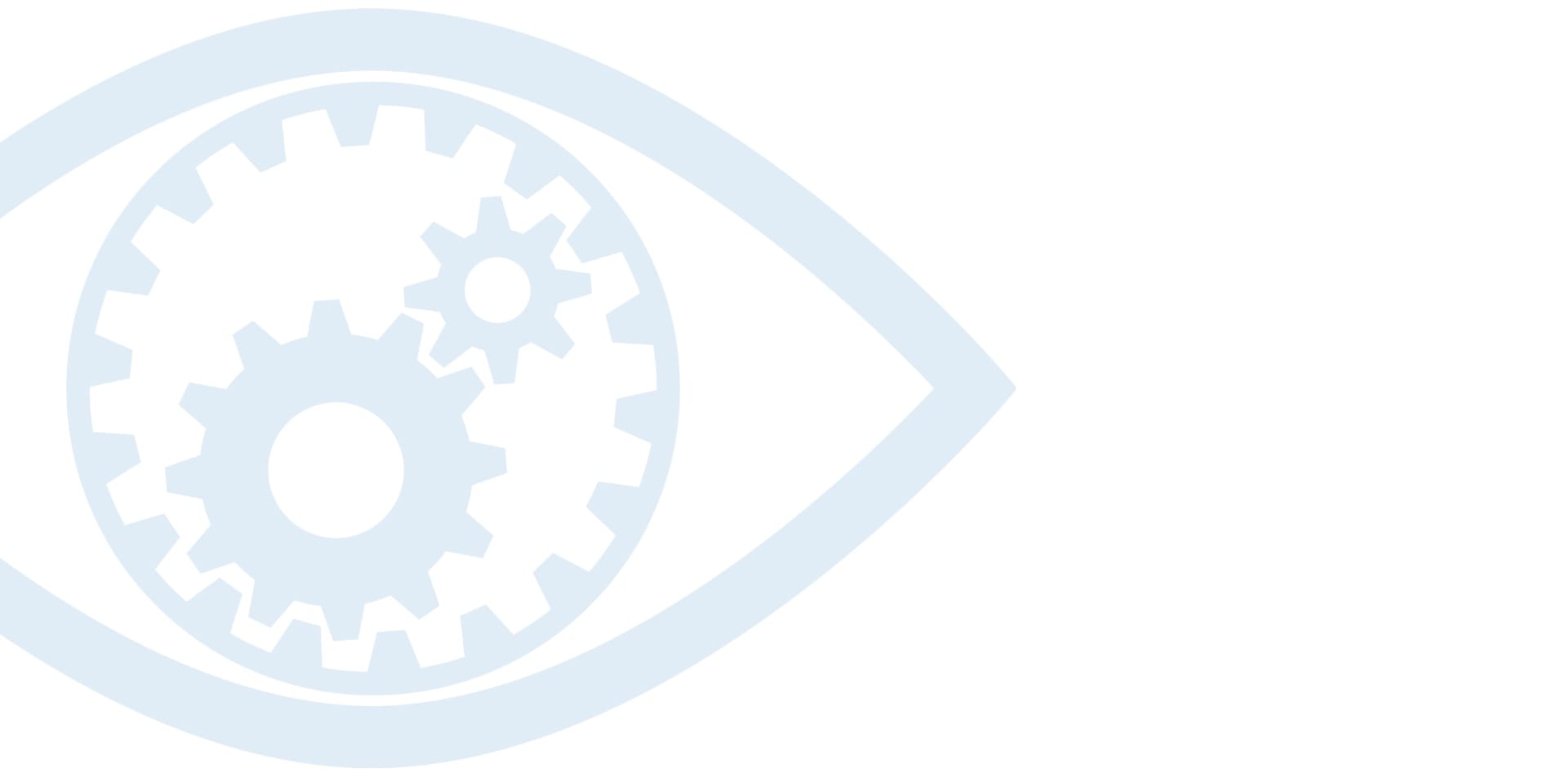
Visit Us
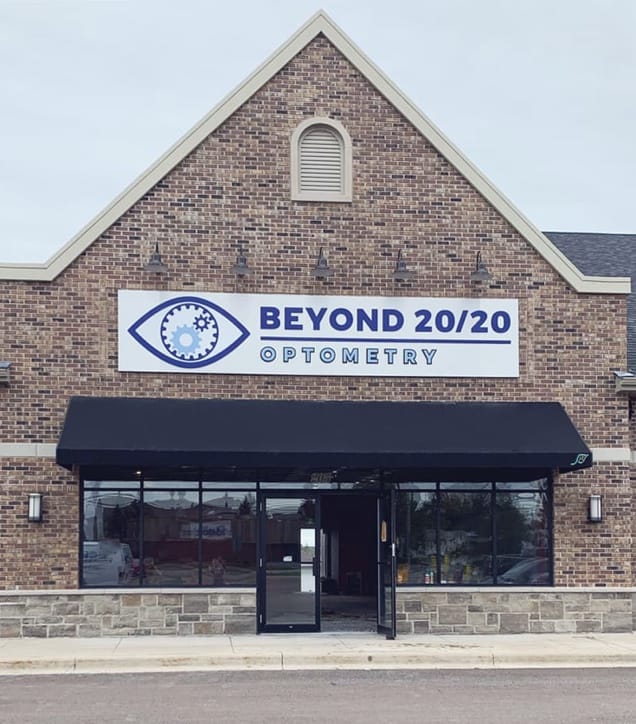
Our Address
- 1688 Mountain Rd. – Unit 205
- Moncton, NB E1G 1A6
Contact Information
- Phone: (506) 858-2020
- Email: [email protected]
Hours of Operation
- Monday: 10:00 AM – 5:00 PM
- Tuesday: 9:00 AM – 5:00 PM
- Wednesday: 11:00 AM – 7:00 PM
- Thursday: 11:00 AM – 7:00 PM
- Friday: 9:00 AM – 5:00 PM
- Saturday: CLOSED
- Sunday: CLOSED

